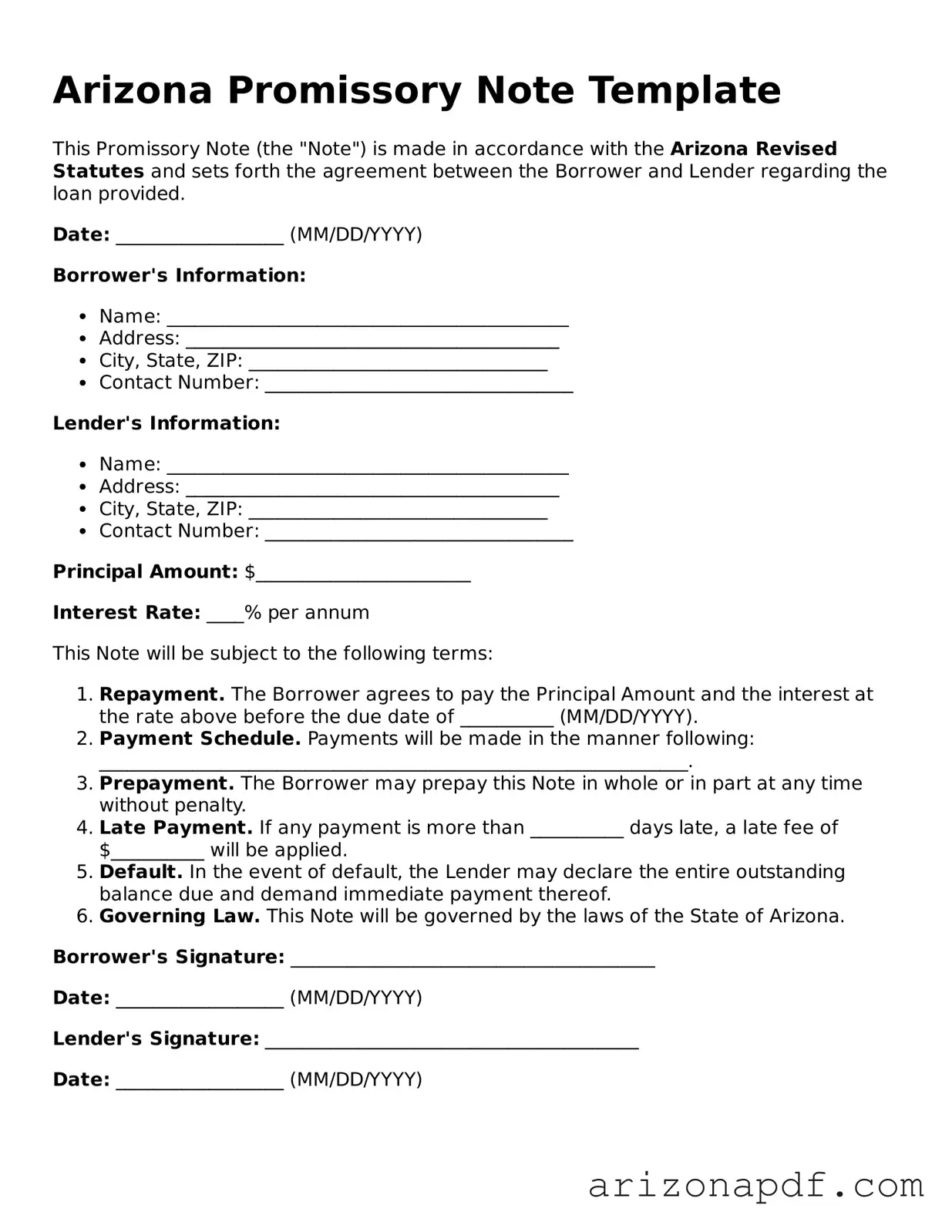A Mortgage Agreement shares similarities with the Arizona Promissory Note form as both are legal documents that pertain to borrowing money. The Mortgage Agreement, however, is secured against a property, which means if the borrower fails to repay the loan, the lender can take ownership of the property used as collateral. The Promissory Note, in contrast, might not necessarily be secured, indicating a potentially different level of risk for the lender.
Loan Agreements, much like the Arizona Promissory Note, outline the terms under which money has been lent. However, Loan Agreements are typically more comprehensive, detailing the responsibilities of both parties in greater depth including interest rates, repayment schedules, and consequences of default. This document often serves as a more formal and detailed contract between the lender and borrower.
A Bill of Sale is another document related to the Arizona Promissory Note, particularly in transactions where goods are sold on credit. The Bill of Sale proves ownership of an item has transferred from a seller to a buyer and may be accompanied by a Promissory Note when the buyer needs to make payments over time. Both documents work together to ensure the terms of payment and ownership transfer are clear.
A Line of Credit Agreement also bears similarity to the Promissory Note as it involves a lender allowing a borrower to use funds up to a specified limit. The borrower can withdraw funds as needed, making it a flexible financial tool. The Promissory Note can be seen as a subset of such agreements, usually pertaining to a single loan amount rather than an ongoing borrowing arrangement.
An IOU (I Owe You) is a simpler cousin of the Arizona Promissory Note. It acknowledges that a debt exists but typically lacks the detailed terms found in a Promissory Note, such as repayment schedules and interest rates. While an IOU may suffice for informal loans among acquaintances, a Promissory Note is favored for more formal agreements to ensure clarity and enforceability.
A Debt Settlement Agreement is related to the Promissory Note in the context of resolving an outstanding debt. This agreement comes into play when the original terms of the Promissory Note cannot be met, and the parties negotiate a settlement. It outlines the new terms under which a debt will be considered settled, often involving a reduced payoff amount.
Last, a Credit Agreement shares the foundational principle of lending with the Promissory Note but is typically used in more complex financial transactions. It involves detailed terms about the extension of credit from a lender to a borrower. The agreement covers various loans, credit limits, terms of repayment, and covenants that the borrower must adhere to, making it a comprehensive lending document.
